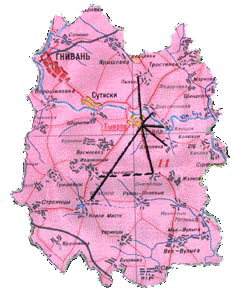| Subterrenes |  |
Now we came up to the main problems: who have built the caves?
When? And why? We’ll tell you our point of view. The majority of the underground passages were built during XVI – the first half of XVII
centuries. That was done because of the position of the territory near the borders and
because of the attacks of the aggressive neighbors form the south (see chapters
“Uncrowned kings” and “Podolian Castles”). So, the first mission of the
underground passages was the protective one. With the beginning of building of castles the
role and mission of the catacombs greatly increased. Those caves became the mane attribute
of the defence system. There exist plans of the castles of the Middle Ages but one will
not find the plans of the underground passages. That information was as secret one. Very
few people knew the directions and entrances of the underground passages. So, the next
mission of the caves was the strategic one. After Lublin Union (1569) and especially after
Brest Union (1596) a great number of Catholic orders - Jesuits, Carmelites, Dominicans
etc. appeared on the territory of Podillia. They built fortified monasteries and
underground passages. Some of them they used as shelters, in the others they made crypts
– underground graves of monks. Probably, there were others missions of the
 heard about the
underground highway Nemiriv-Vinnitsa and also Gaisin-Illintsi-Nemiriv. Some years ago a
group of enthusiasts went under the ground a route Medzhibish-Letichiv (40km). Here we
have some questions. What to do with such an amount of the ground? How to get the
necessary amount of thermal energy for brick glazing? What are this routes for? The
majority of questions are without answers. We just know that the general amount of forests
on the territory of Podillia in the second half of XVIth century decreased greatly. The
wood was of great value, it was exported and used for brick glazing. The technology of
building the underground passages is more of less clear. The workers tried to avoid rocky
places and the main work was in alluvial grounds. The route was usually the most optimal.
Certainly, our thoughts are based on the analysis of that not numerous fragments of the
Podillia’s caves of the Middle Ages that are known nowadays. We are sure they are parts
of the complex system of the underground passages of our territory. The investigations
should be continued.
heard about the
underground highway Nemiriv-Vinnitsa and also Gaisin-Illintsi-Nemiriv. Some years ago a
group of enthusiasts went under the ground a route Medzhibish-Letichiv (40km). Here we
have some questions. What to do with such an amount of the ground? How to get the
necessary amount of thermal energy for brick glazing? What are this routes for? The
majority of questions are without answers. We just know that the general amount of forests
on the territory of Podillia in the second half of XVIth century decreased greatly. The
wood was of great value, it was exported and used for brick glazing. The technology of
building the underground passages is more of less clear. The workers tried to avoid rocky
places and the main work was in alluvial grounds. The route was usually the most optimal.
Certainly, our thoughts are based on the analysis of that not numerous fragments of the
Podillia’s caves of the Middle Ages that are known nowadays. We are sure they are parts
of the complex system of the underground passages of our territory. The investigations
should be continued.
![]()